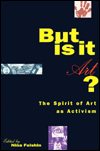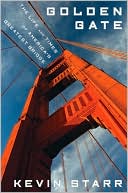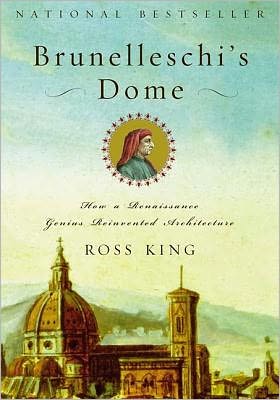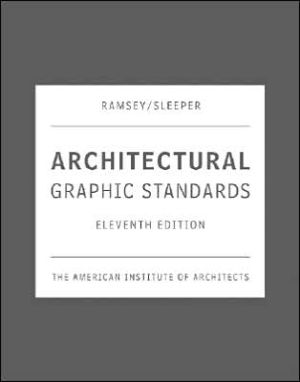But Is It Art?: The Spirit of Art as Activism
Nonfiction. Art. Activisim. Criticism and Theory. An anthology that explores the rise of activist public art that agitates for social change. Included are discussions of such leading and controversial artists as: the Guerrilla Girls, Gran Fury, Group Material, Women's Action Coalition, and the Artist and Homeless Collaborative.
Search in google:
(YLR)((This groundbreaking anthology describes the emergence and cultural evolution of community-based activist art. Each chapter focuses on a particular artist or artist collective and is profusely illustrated.[art][political][literature]Publishers WeeklyThe dozen essays here focus on a variety of artistic and cultural practices that help to define the ``art'' of public art and the ``activism'' of the activist artist. Informative and helpful new material on the Women's Action Coalition, the Guerrilla Girls and The Art and Homeless Collaborative comes late in this volume, after a great deal of eulogizing and laundry-list art history. The writers here-with the exception of Jan Avgikos, Elizabeth Hess and Tracy Ann Essoglou-too often take the claims of artists and the art world at face value, producing uncritical texts as propagandistic as the art they champion. Public art/activist art today exists at a critical junction in the social history of this country, questioning the nature of art, the political process, public perception and insidious forms of control and domination-including the often didactic and well-intentioned artist who condescendingly helps certain social groups for personal advantage. Only Avgikos, Hess, Essoglou and Andrea Wolper manage to rise above the tide of informational prose to question if such art actually fufills the good intentions of its creators. And only Avgikos suggests the advantage of calling these practices ``art''-they fill artistic requirements, not according to abstract criteria, but according to the big money of granting organizations and museums. Lastly, poor photographs and the difficulties of describing this art ex situ deprives it of much of its power. (Feb.)
Introduction9Ch. 1The Invisible Town Square: Artists' Collaborations and Media Dramas in America's Biggest Border Town31Ch. 2This Is to Enrage You: Gran Fury and the Graphics of AIDS Activism51Ch. 3Group Material Timeline: Activism as a Work of Art85Ch. 4The American Festival Project: Performing Difference, Discovering Common Ground117Ch. 5Ecopolitics/Ecopoetry: Helen and Newton Harrison's Environmental Talking Cure141Ch. 6Maintenance Activity: Creating a Climate for Change165Ch. 7Is It Still Privileged Art? The Politics of Class and Collaboration in the Art Practice of Carole Conde and Karl Beveridge195Ch. 8The Body Politics of Suzanne Lacy221Ch. 9Making Art, Reclaiming Lives: The Artist and Homeless Collaborative251Ch. 10Peggy Diggs: Private Acts and Public Art283Ch. 11Guerrilla Girl Power: Why the Art World Needs a Conscience309Ch. 12Louder Than Words: A WAC Chronicle333Notes and Bibliographies373Contributors405Photo credits411
\ Publishers Weekly\ - Publisher's Weekly\ The dozen essays here focus on a variety of artistic and cultural practices that help to define the ``art'' of public art and the ``activism'' of the activist artist. Informative and helpful new material on the Women's Action Coalition, the Guerrilla Girls and The Art and Homeless Collaborative comes late in this volume, after a great deal of eulogizing and laundry-list art history. The writers here-with the exception of Jan Avgikos, Elizabeth Hess and Tracy Ann Essoglou-too often take the claims of artists and the art world at face value, producing uncritical texts as propagandistic as the art they champion. Public art/activist art today exists at a critical junction in the social history of this country, questioning the nature of art, the political process, public perception and insidious forms of control and domination-including the often didactic and well-intentioned artist who condescendingly helps certain social groups for personal advantage. Only Avgikos, Hess, Essoglou and Andrea Wolper manage to rise above the tide of informational prose to question if such art actually fufills the good intentions of its creators. And only Avgikos suggests the advantage of calling these practices ``art''-they fill artistic requirements, not according to abstract criteria, but according to the big money of granting organizations and museums. Lastly, poor photographs and the difficulties of describing this art ex situ deprives it of much of its power. (Feb.)\ \ \ \ \ Library JournalThe notion that art consists only of carefully framed oil paintings or grandly situated marble statues has been under attack ever since Duchamp signed a urinal and displayed it as a ready-made art object. Despite the passage of decades, the discourse over the definition of art and the role of artists in society has only grown more heated. Presented within this text are 12 clearly written essays examining the AIDS activism of the group Gran Fury, the feminism of Guerrilla Girls, the Woman's Action Coalition, the personal politics of Suzanne Lacy and Peggy Diggs, and ongoing art projects concerning homelessness, the environment, and the dignity of labor, including a thoughtful presentation of the now infamous Art Rebate/Arte Reembolso piece (in which 450 $10 bills were distributed to undocumented worker/taxpayers at the Mexican border). The clarity and timeliness of this volume recommend it to all libraries.-David McClelland, Temple Univ. Lib., Philadelphia\ \








